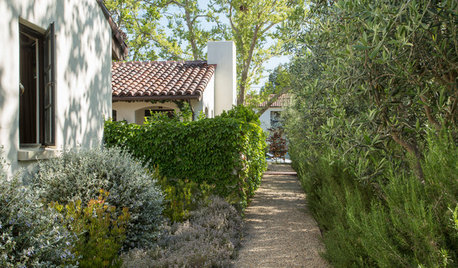Are photinias really that bad here in the Commonwealth?
yankee_in_va
18 years ago
Related Stories

SELLING YOUR HOUSE6 Tips for Staging Historic Homes
Putting a period home on the market requires a unique level of attention to detail. Here's how to preserve its historic appeal
Full Story
MODERN HOMESHouzz Tour: A Midcentury Modern Home Takes In the Views
A 1950s house in Perth, Australia, gets a sensitive yet dramatic update for 21st-century living
Full Story
ECLECTIC HOMESHouzz Tour: A Modernized Georgian Beauty With a Glam Loft Conversion
Extended from top to bottom, this eclectic London home combines period charm with modern chic
Full Story
GREAT DESIGNERSCan You Match These Faces With Their Famous Designs?
Architects' portraits are less familiar than their iconic designs, but take a good look — you might see a connection
Full Story
EVENTSTour 5 Gorgeous California Gardens
Get a sneak preview of Palo Alto gardens in the 2015 Gamble Garden Spring Tour, happening Friday and Saturday
Full Story





davidcf
nancyw
Related Professionals
Carlisle Landscape Architects & Landscape Designers · Saint Louis Park Landscape Architects & Landscape Designers · South Orange Landscape Architects & Landscape Designers · East Patchogue Landscape Architects & Landscape Designers · Andover Landscape Contractors · Coeur d'Alene Landscape Contractors · Fort Atkinson Landscape Contractors · Fort Wayne Landscape Contractors · Hoover Landscape Contractors · Mercedes Landscape Contractors · Palm Beach Gardens Landscape Contractors · Westchester Landscape Contractors · York Landscape Contractors · Cleveland Driveway Installation & Maintenance · Park Ridge Driveway Installation & Maintenanceyankee_in_vaOriginal Author
gardenpaws_VA
gin3
gardener_sandy